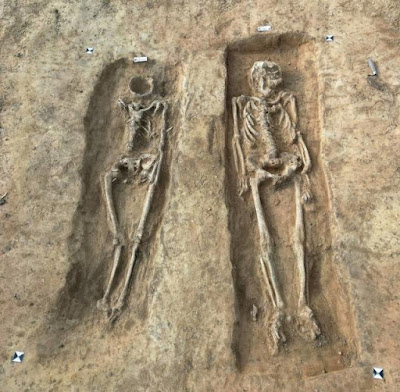More than 1,000 years ago, a sprawling fort sat atop a hill in Germany, overlooking the village of Helfta.
Known as Helpideburg, the “very large ringfort” was established during the Carolingian period, likely sometime during the late eighth century. Between its inception and the 13th century, “the whole place was a royal and imperial residence, a military and administrative base ... a settlement and also economic centre,” Felix Biermann, an archaeologist with the State Office for Monument Preservation and Archeology of Saxony-Anhalt, told McClatchy News in an email.
Now, archaeologists are learning more about the “normal people” who kept the castle and fort running, Biermann said. And their recent discovery has given them a small glimpse into the life of a palace official.
A team of experts unearthed two graves in one of the palace’s “outer baileys” — an area outside the fortresses inner walls — belonging to a man and woman in October, according to Biermann. The graves date to the ninth century.
Experts suspect the graves belonged to a married couple, according to Biermann.




0 Comments